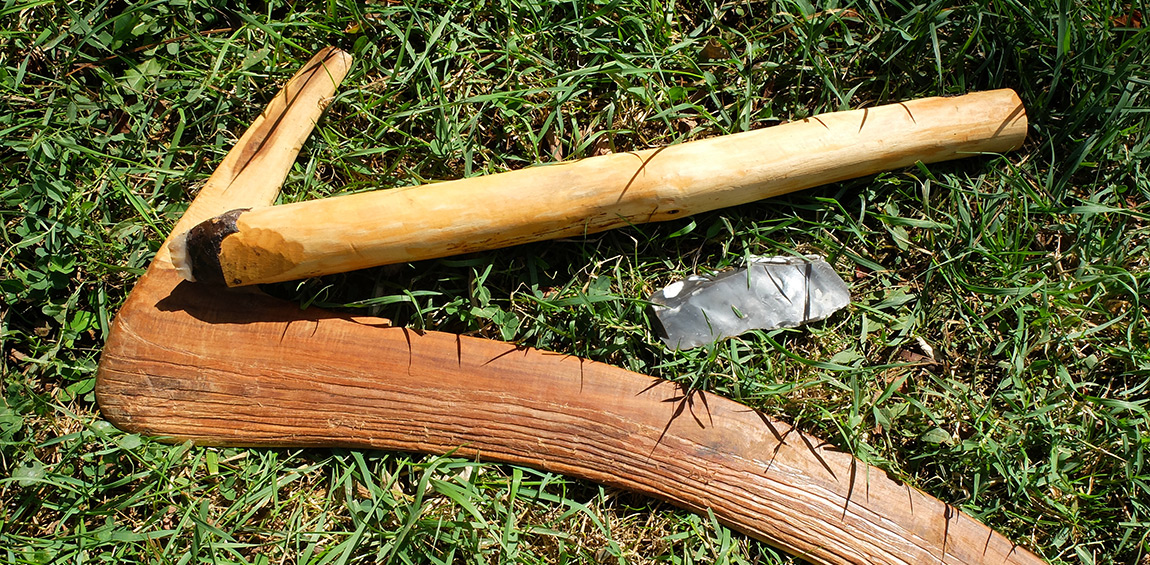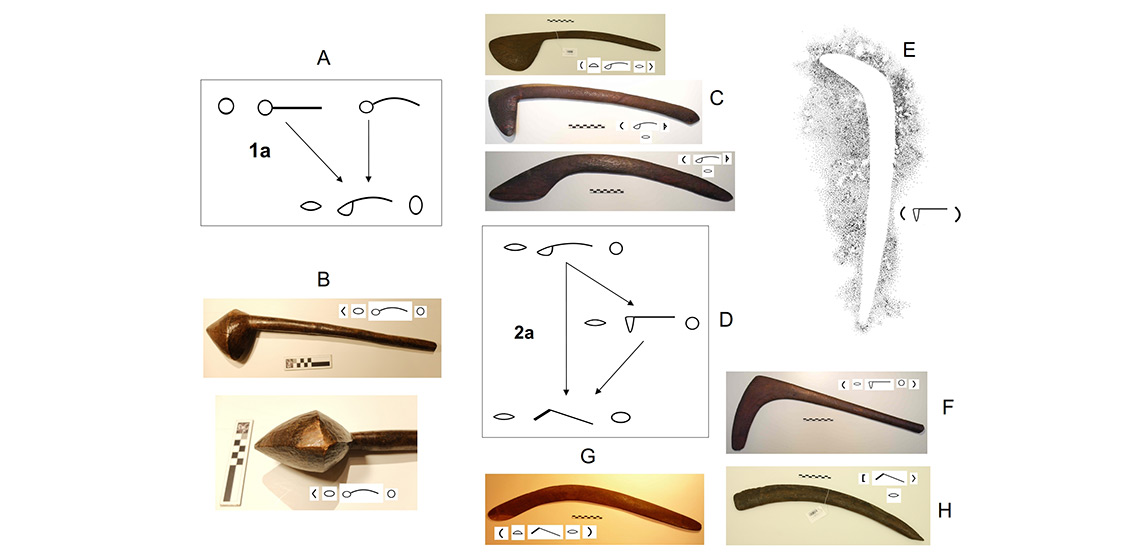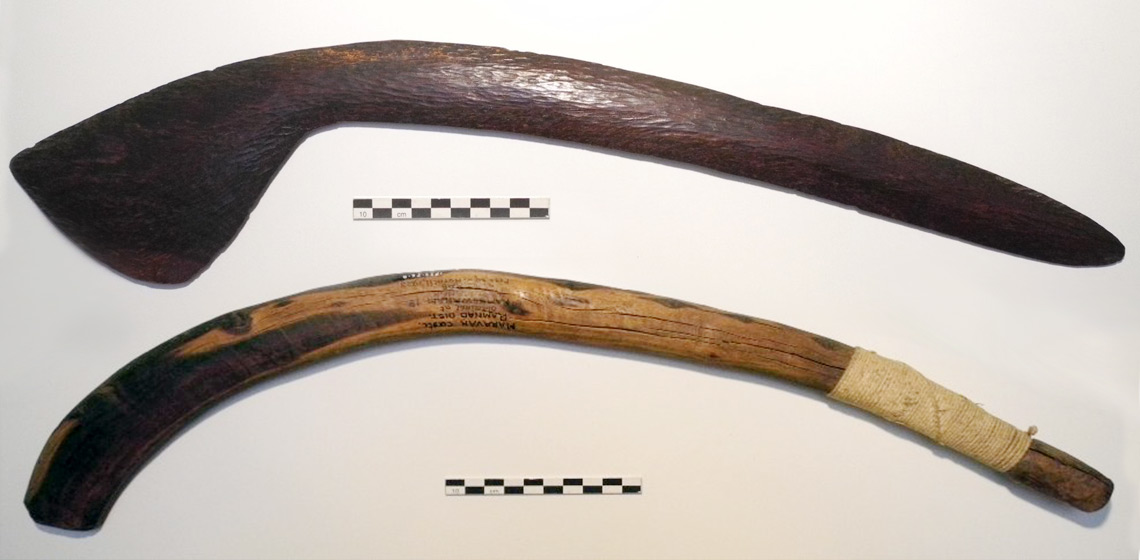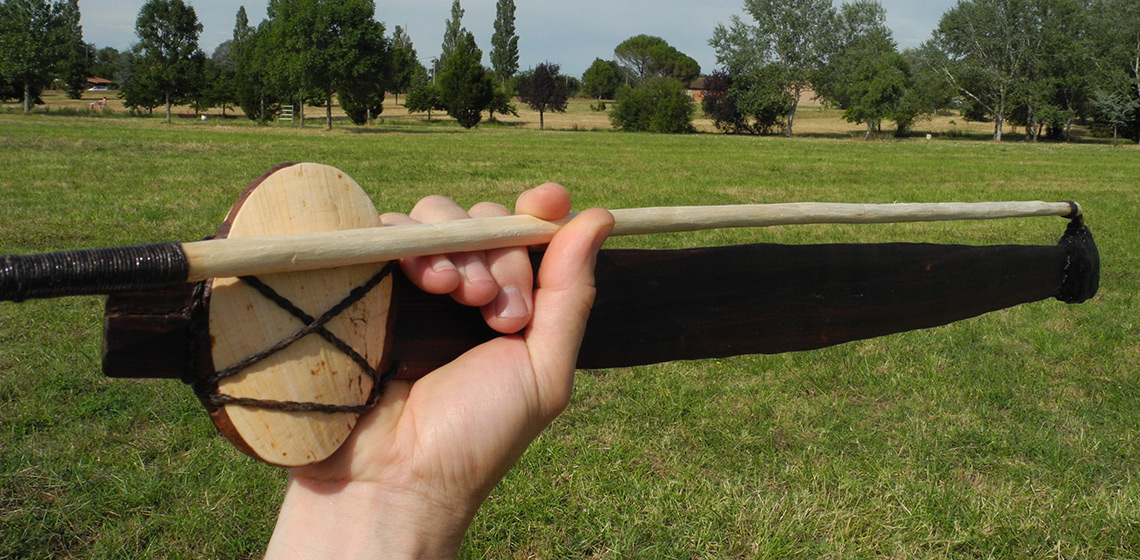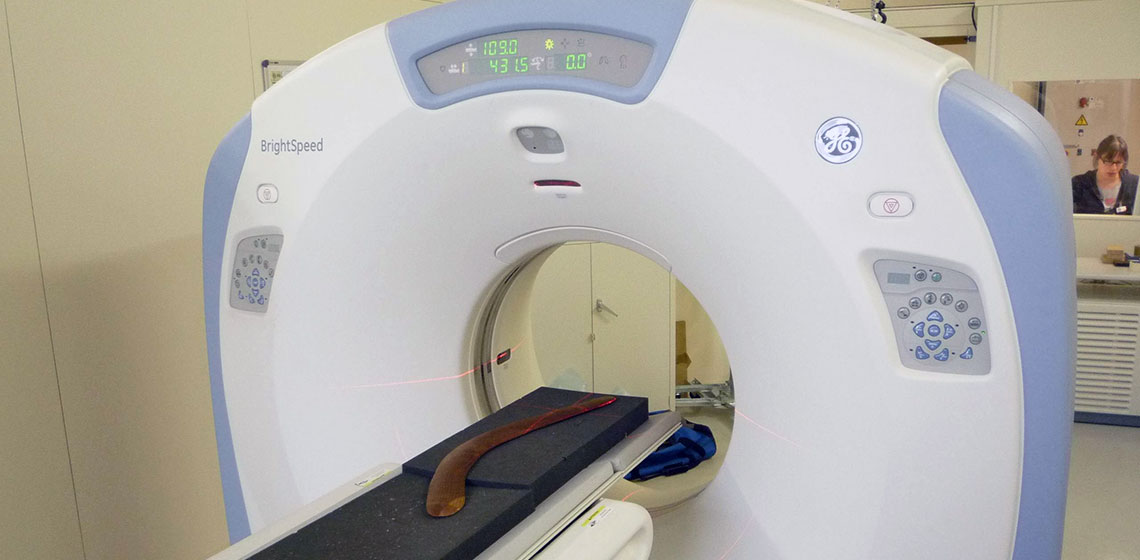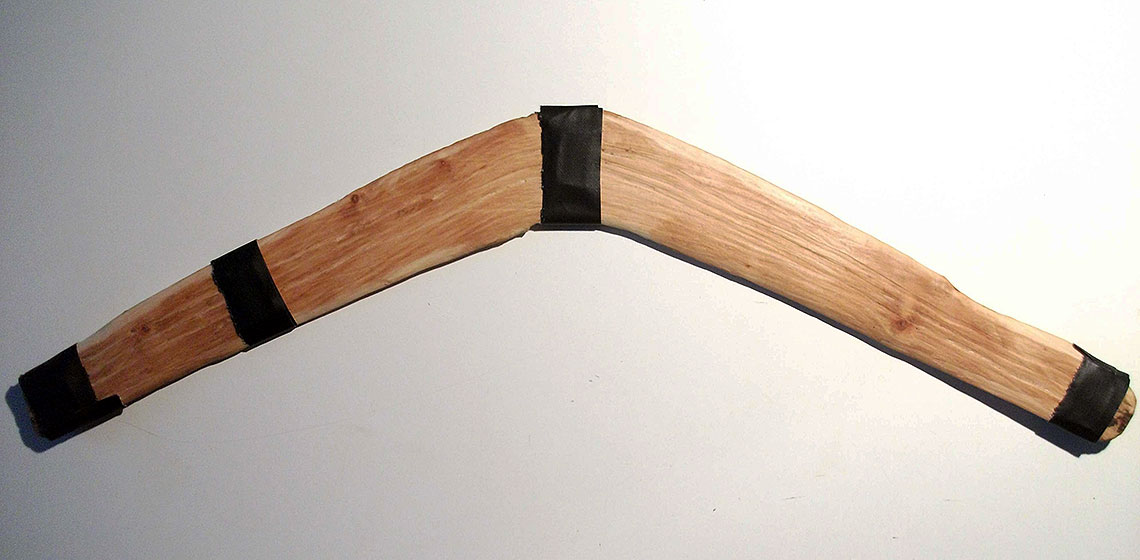throwing stick
Investigation of the Practical Functions of Fluting on Throwing Sticks and on Other Ethnological Wooden Artefacts
Publication Date
Why are the surfaces of some Australian throwing sticks fluted? According to a previous research, this feature could positively influence their flight, but this effect does not explain the function of fluting on other wooden artefacts (shields, clubs, containers) which are not used as projectiles. The former function of flutes is probably to be found among others type of wooden implements from which it has been transferred to throwing sticks...
A Scheme of Evolution for Throwing Sticks
Publication Date
Prehistoric wooden projectiles likely have a complex evolutionary story in a similar way to stone tools, depending on their functions, and the cognitive and physical capabilities of hominins who used them. The technologies of some ancient projectiles (e.g., spears, arrows) can be studied more directly because they were equipped with...
Can Experimental Archaeology Confirm Ethnographic Evidence? The Case of Aboriginal Boomerangs Used as Retouchers
Publication Date
In this article, an experimental programme is used to examine how boomerangs may be used to retouch stone tools. The programme's findings confirm ethnographic data pertaining to the employment of hardwood boomerangs in retouching activities and investigate their technological similarities to Palaeolithic bone retouchers...
Traces of Manufacture, Use, Repair and Modification Observed on Ethnographic Throwing Sticks and Boomerangs
Publication Date
Throwing sticks and boomerangs are present in the collections of many French and international museums. Collected mainly in the 19th and 20th centuries by travelers, they were mainly analyzed from a stylistic point of view, to relate them to their region of origin. Some of these objects were made by the indigenous populations especially to be exchanged with Europeans and only bear macro-traces of manufacture...
Throwing Stick to Spear Thrower - Study of Ethnographic Artefacts and Experimentation
Publication Date
Little is known about the process of the invention of the prehistoric spear thrower which appeared around 25,000 years ago in Europe, although it may have emerged earlier on other continents. This innovative weapon had a late arrival in Australia from Papua New Guinea at the end of the late glacial maximum, and probably induced an adaptation in hand throwing spear technology used by local people. But could the spear thrower have also originated independently from older prehistoric technology on this continent?
X-Ray Tomography and Infrared Spectrometry for the Analysis of Throwing Sticks & Boomerangs
Publication Date
In 2009, confronted to the study of throwing sticks collections from several museums and private collections (including more than three hundreds artefacts) and the need to evaluate their aerodynamic and functions, I developed a throwing stick classification and a methodology to measure their characteristics (Bordes, 2014). This approach is complementary to the gathering of ethnographic or archaeological contextual data to confirm or invalidate hypotheses about theirs functions.
A Gaulish Throwing Stick Discovery in Normandy: Study and Throwing Experimentations
Publication Date
In 2010 archaeological excavations on the pre-Roman site of Urville Nacqueville, Normandy (France) discovered a shaped unknown wooden implement. This boomerang shaped wooden artefact, dated from 120 to 80 BC, has been found in an enclosure trench of a Gaulish village close to a ritual deposit of whalebones...

